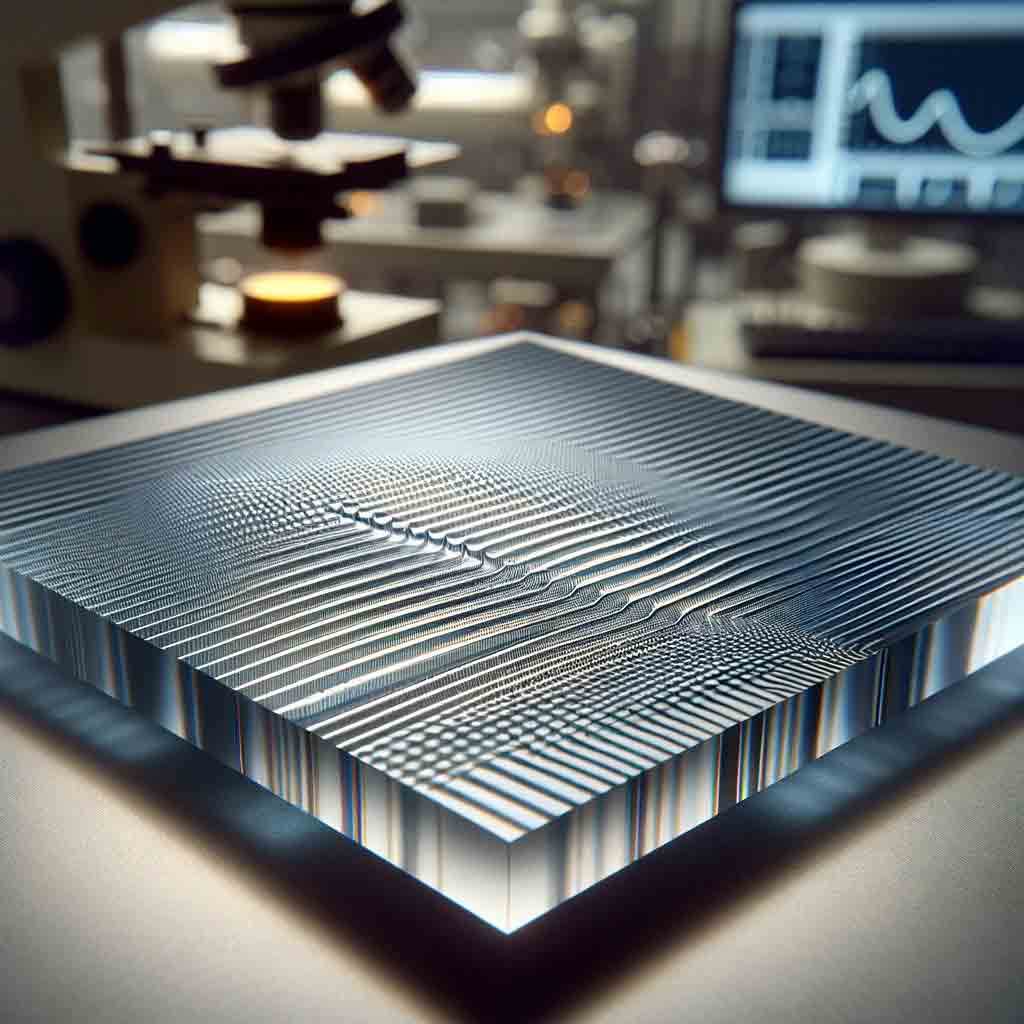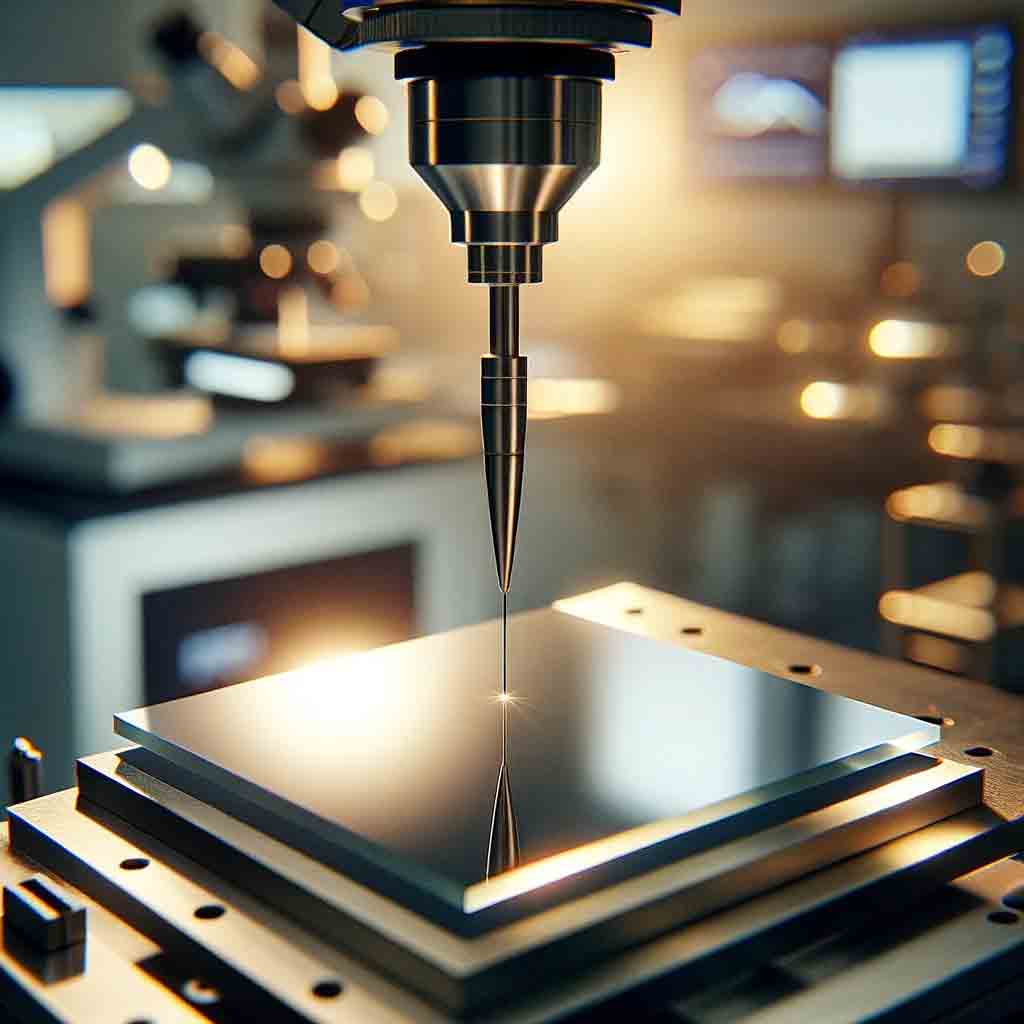LiNbO3 as Reference Sample for PFM Measurements
A graduate student requested a quote for their following Piezoresponse Force Microscopy.
I am looking for Lithium niobate for two purposes.
- I need one 3" wafer of SAW grade reference sample of 128deg Y-X Lithium niobate SSP. which thickness of LiNbO3 would you recommend? Will the X-direction be marked on the wafer?
- Need Lithium Niobate wafers as reference sample for PFM measurements. Would I need to buy crystal or wafer for this purpose?
Reference #301804 for specs and pricing.
Get your LiNbO3 Quote FAST! Or, Buy Online and Start Researching Today!
How is Lithium Niobate Used for PFM Measurements?
Lithium niobate (LiNbO₃) is a versatile and widely used material in various scientific and industrial applications due to its unique properties. Here are some key uses:
-
Optical Applications: Lithium niobate has excellent electro-optic, acousto-optic, and nonlinear optical properties, making it a preferred material for:
- Optical Modulators: It can change the intensity, phase, or frequency of light waves, which is crucial for fiber optic communication systems.
- Frequency Doubling: Lithium niobate can convert infrared light into visible light through second harmonic generation, which is valuable in laser technology.
- Waveguides: It can guide light waves with low loss, useful in integrated optical circuits and photonic devices.
- Piezoelectric Devices: Lithium niobate has strong piezoelectric properties, making it useful in:
- Surface Acoustic Wave (SAW) Devices: These devices use lithium niobate to generate and manipulate acoustic waves, which are important for filters, resonators, and sensors in telecommunications.
- Sensors: Its piezoelectric properties allow it to be used in pressure, acceleration, and other sensors.
- Nonlinear Optics: Due to its nonlinear optical properties, lithium niobate is used in applications such as:
- Parametric Oscillators: These are used in signal generation and amplification in optical communication.
- Optical Mixing: It can combine light waves of different frequencies to create new frequencies, useful in various optical applications.
- Quantum Computing: Lithium niobate is being explored for quantum computing applications due to its optical and quantum properties, which are compatible with quantum communication and information processing.
- Electro-Optic Q-Switches: It can be used in Q-switches to modulate the output of lasers, controlling the pulse duration and intensity, which is useful in medical and industrial laser applications.
Overall, lithium niobate's combination of electro-optic, piezoelectric, and nonlinear optical properties makes it a valuable material across various technological and scientific fields.
Periodically Poled Lithium Niobate Used in Nonlinear Optics
A Ph.D. Candidate requested help with their following question.
Question:
I've had a quick look at some of the lithium niobate samples you've got and wondered if any of them are periodically poled? I want to use one as a calibration tool for a lateral signal in piezoresponse force microscopy.
Answer:
Yes, lithium niobate wafers are often periodically poled. Periodic poling is a process used to create alternating domains with opposite orientations of the crystal's spontaneous polarization. This periodic arrangement of domains enables nonlinear optical processes, such as frequency doubling or optical parametric generation, which are crucial for various photonic and optoelectronic applications.
In particular, periodically poled lithium niobate (PPLN) is widely used in nonlinear optics due to its ability to facilitate efficient second harmonic generation, sum frequency generation, and other nonlinear optical processes. This makes PPLN a valuable material in fields such as telecommunications, laser technology, and quantum optics.

Reference #254374 for specs and pricing.
Which Substrate Works Best for PFM Measurements?
For
PFM (Piezoresponse Force Microscopy) measurements, the choice of substrate depends on the specific properties being measured and the sample's characteristics. Generally, the following substrates work well for PFM measurements:
-
Silicon: Silicon wafers provide a smooth and stable surface, which is essential for accurate PFM measurements. Silicon's wide availability and compatibility with various materials make it a popular choice.
-
Glass: Glass substrates offer similar benefits to silicon, with a smooth surface and good thermal stability. Glass can also be used with transparent samples, making it suitable for optical and PFM studies.
-
Quartz: Quartz substrates are ideal for PFM measurements that require a low-loss, stable substrate with minimal interference. Quartz is often used in combination with piezoelectric materials.
-
Metals: Metallic substrates, such as gold or platinum-coated wafers, can be used in PFM measurements when studying materials deposited on these substrates. The conductive nature of these metals helps prevent charge accumulation and provides a stable reference for the measurement.
The choice of substrate primarily depends on the nature of the material being studied, the experimental setup, and the desired measurement accuracy. A smooth, stable, and compatible substrate is essential for reliable PFM measurements.



